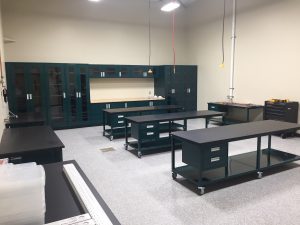When I was considering my offer for UT last year, I forgot to really ask for a flume. It seemed so natural – fluid mechanics professors should have flumes – that it didn’t even cross my mind. I think I was so excited by the giant outdoor flume that I was satisfied anyway. But luckily, the department realized – we already have a tilting glass research flume. It was built in 1972 and hasn’t really been “run” as a flume in a decade or two (or more…), though it has had water in it since then, leaking like a sieve each time. There were plastic chairs sitting in it, chipping paint, rust, drip marks, etc. But seeing good bones on it, I couldn’t let it go to waste and have been plotting ways to bring it back to life over the past year.
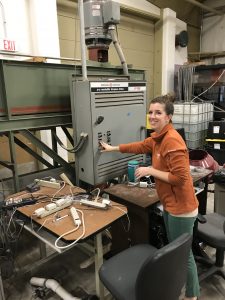
Last week, my students Junior and Luisa set to work cleaning it and working with Jim Buttles of the Jackson School to see if we could get it to working order. Electronics were inspected and repaired, and supposedly it would all work. Yesterday was long-anticipated “flume day” where we planned to put water in it and run the pump, cross our fingers, toes, and everything possible, and … it ran! They did all the work but let me push the button, which I was pretty pumped about, no pun intended.

Though we filled it with clean water, leftover mud was sitting in the recirculation pipe, so we had an impressively cloudy hydraulic jump (not really shown here, but you can imagine). It smelled incredibly earthy, also a little like fire (46 year old dust needs to get brushed out of the control box!) but it worked and the water was rolling.
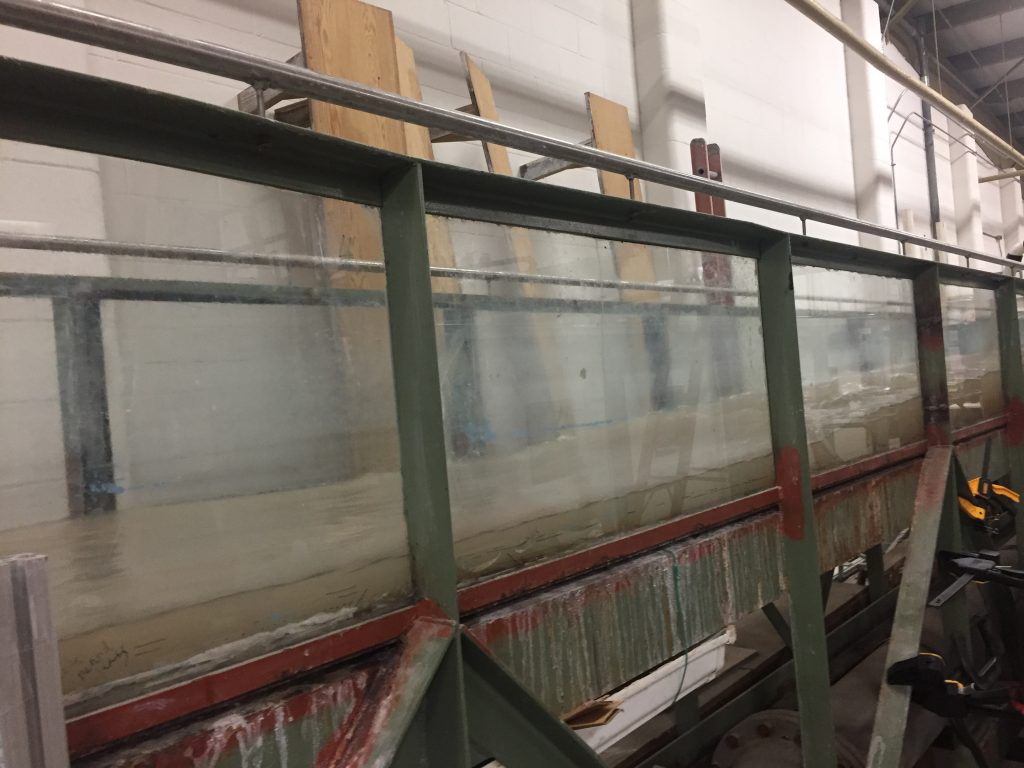
There’s still a lot of cleaning to do, updating the panels for full optical access, investigating the tilting mechanism, and beautifying the paint job a bit, but I remain optimistic! Now we just need a name…
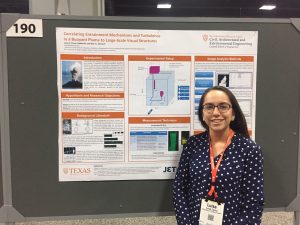
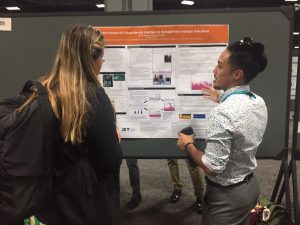
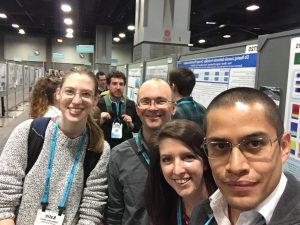 We also caught up with part of the Cowen EFMH crew from Cornell. We have two current Ithacans, Katie and Seth, as well as one of my favorite Illinois professors, Rafael. Always a joy to get part of the group back together!
We also caught up with part of the Cowen EFMH crew from Cornell. We have two current Ithacans, Katie and Seth, as well as one of my favorite Illinois professors, Rafael. Always a joy to get part of the group back together!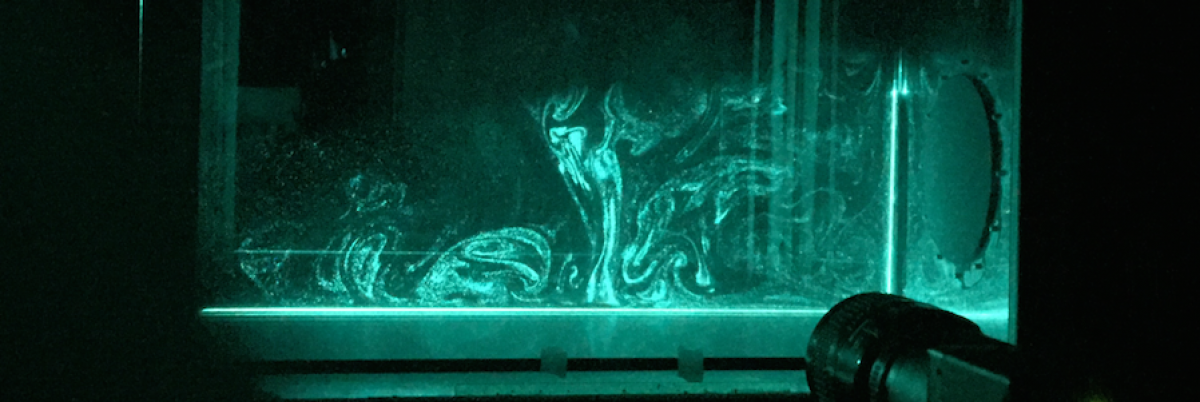
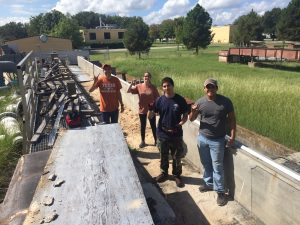 The outdoor flume (home of the TxDOT concrete median barrier project) is under renovations to remove old equipment and prepare it for our large scale tests. I have wonderful undergraduate students who have been doing some intense sledgehammering.
The outdoor flume (home of the TxDOT concrete median barrier project) is under renovations to remove old equipment and prepare it for our large scale tests. I have wonderful undergraduate students who have been doing some intense sledgehammering.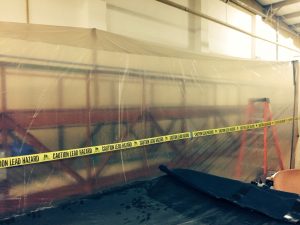 Our indoor flume from 1972 has seen a lot of work — lead paint is now dealt with and the cracked and damaged glass panels have been removed.
Our indoor flume from 1972 has seen a lot of work — lead paint is now dealt with and the cracked and damaged glass panels have been removed.  Windows have been cut through the steel base so we can shoot lasers up through the bottom, and … it has been painted green, because why not. It’s beautiful. In another week or wo the new acrylic liners should be installed so we can maybe get water back in — fingers crossed! It is remarkable.
Windows have been cut through the steel base so we can shoot lasers up through the bottom, and … it has been painted green, because why not. It’s beautiful. In another week or wo the new acrylic liners should be installed so we can maybe get water back in — fingers crossed! It is remarkable.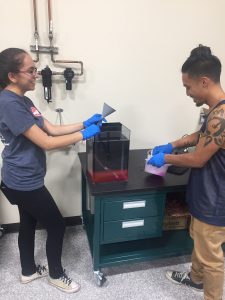 And finally, the actual “JET Lab” is built and already a mess, meaning – research is happening! Wires are being spliced, fishtanks are housing mini-experiments (while the big tanks are being manufactured), lasers and cameras and dyes and all sorts of goodies are arriving in the mail every day. It is a beautiful lab and I have had an incredible amount of support from Facilities, the Cockrell School, my department and center, and the contractors who have come in to make this a reality. And of course, my students, who are always willing to get their hands wet. I am beyond thrilled.
And finally, the actual “JET Lab” is built and already a mess, meaning – research is happening! Wires are being spliced, fishtanks are housing mini-experiments (while the big tanks are being manufactured), lasers and cameras and dyes and all sorts of goodies are arriving in the mail every day. It is a beautiful lab and I have had an incredible amount of support from Facilities, the Cockrell School, my department and center, and the contractors who have come in to make this a reality. And of course, my students, who are always willing to get their hands wet. I am beyond thrilled.